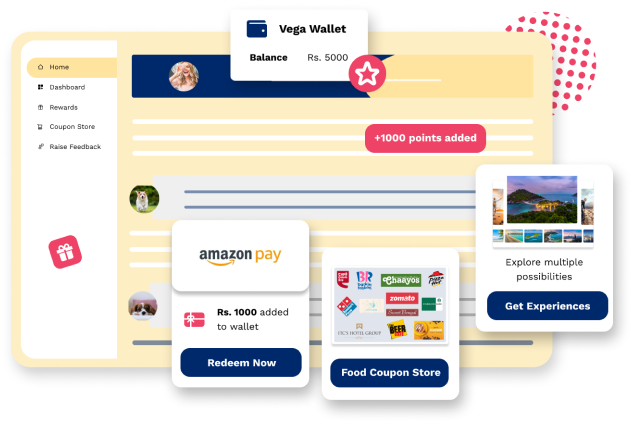Introduction
What is Work Culture?
AGS defines work culture as Culture in the workplace reflecting the personality and working environment of an organization. It is made up of the behaviors, priorities, actions, traditions, and policies created collectively by executives, supervisors, and employees.”
The concept of a work culture stems from the objective of fostering ideal working conditions while being able to stimulate consistent organizational growth. This means setting protocols, standards, and programs that create a collaborative work environment with high productivity. Work culture is the essence of a company and embodies company and personal values, beliefs, traditions, practices, and objectives.
As Fred Schuneman rightly put it, “Workplace culture is to an organization what personality is to an individual”. It has become a critical evaluation factor for organizations, especially from an employee’s perspective. A recent study showed that company culture is an important factor for 46% of job seekers. Many companies look to present their culture to the outside world with the help of various media, such as social networking sites and advertisements, as happy employees mean happy customers.
Importance of Work Culture in an Organization
Having a positive work culture is an invaluable asset for an organization. But it is important to monitor and maintain the environment to ensure that the employees contribute their best and are also doing well mentally and physically. It has a positive impact on many aspects of an organization, such as

Higher Retention Rates Across the Organization
Leaders in a strong company culture know their people and what they require individually in terms of job flexibility, time off, and benefits. Managers aid team members in developing their skills, whether that means a promotion, performance incentives, or constructive feedback.
Employees who feel valued and respected at their workplace are less likely to leave. That is why brands must cultivate a winning organizational culture that supports their core values and mission statement. Employee satisfaction leads to lesser turnover, which saves companies time and money in the hiring process. Companies that develop a strong culture must work to maintain and improve it.
With Vega HR, you would be able to address and focus on retaining your employees and creating a settled workplace.
Ways To Create a Positive Work Environment
An important byproduct of good work culture is a positive work environment that fosters transparency and gives opportunities for employees to learn and grow. A positive work culture fosters personal and organizational development. Recent studies have shown that 69% of employees would work harder if they received more recognition. Employees who have a growth mindset will feel empowered to do their best work and take advantage of opportunities. Businesses can leverage the expertise of long-term employees who have stayed with the organization while also attracting new talent with their positive environment.
Increase Employee Engagement in The Workplace
Organizational culture aids in the improvement of workflows and guides decision-making. It also assists teams in overcoming ambiguity barriers. A clear culture that unites employees and enables people to collaborate with purpose. Employees are motivated and inspired to be more engaged in their work duties and interactions with others as a result of this. It also increases workforce engagement, which boosts productivity. Having a strong connection to an organization and its people creates a positive atmosphere that is difficult to ignore.
High-performance cultures clearly define healthy and supportive behavior and norms. Employees understand their company's culture and what is expected of them. They feel involved and connected.
Understand Positive Brand Identity
The organizational culture of a company reflects its public reputation and image. People form opinions about businesses based on their interactions both inside and outside of the organization. According to a long-term study, businesses with great work cultures saw a 682% growth in revenue over eleven years. Meanwhile, those without the right company culture only grew by 166%.
Customers may be hesitant to do business with anyone associated with the brand if it lacks organizational culture or has a poor image. Businesses that have a strong brand identity tend to attract more business and job candidates who share their values and are committed to their mission.
Increased Productivity in The Workplace
According to Oxford University, happy employees are 13% more productive than other employees. When employees have the resources and tools they need to succeed, it boosts overall productivity and performance. Organizational culture influences workplace structure in ways that bring people with similar skill sets together.
Types of Work Culture in Organization
The concept of a work culture stems from how a leader envisions their goals. It is important to respect the process and work towards achieving the goal together with your team, and setting the right tone and building the right work culture is very crucial in this aspect. It is important to identify the right type of work culture that can set the tone for your operations. Here are a few types of work cultures which can be ideal for your team:
Adhocracy Culture
Adhocracy is a combination of the words 'Ad Hoc’ and bureaucracy. As a result, organizations with an ad hoc culture are more adaptable and less constrained by bureaucratic procedures and policies. Businesses with adhocracy cultures are always thinking ahead and developing new products because they operate under the assumption that all of their products have a limited shelf-life.
Most start-ups and tech companies have this culture in place so that they can create without too many barriers and be the first to market. Adhocracy cultures are common in Silicon Valley companies such as Facebook and Google.
Clan Culture organization
Clan culture is a friendly and upbeat culture, and it is made up of employees who have a lot in common. Building and maintaining strong company culture, as well as focusing on employee well-being, are always top priorities.
Clan leaders are highly respected and are frequently regarded as mentors or role models. These leaders promote teamwork, employee involvement, and empowerment. Employees across the organization share common business goals and company values, resulting in a streamlined universal vision and employees who are invested in the company's mission.
Customer Focused Culture
Customer-focused cultures prioritize their customers and empower their employees to do the same. A true customer-focused culture actively involves your entire organization in understanding how to provide the best customer experience at every turn at every level.
Hierarchy Culture
Hierarchy Culture is defined by structure, established procedures, and levels of authority. It is the most traditional structure in comparison with the other cultures. There are several layers of management between leadership and employees, many more than in other cultures, and leaders are highly respected by their teams.
Market Driven Culture
Market culture is all about profit margins and staying ahead of the competition. Companies with market-driven cultures may prioritize performance and result over employee experience and satisfaction. This culture can be found at Tesla, Amazon, and Apple.
Purpose Driven Culture
This culture is based on a clear, shared purpose and attracts employees, customers, and partners who share those values. These cultures are more community-focused, collaborative, and charitable. Leaders and employees share a commitment to ensuring that global resources are shared with those on the margins.

What are the Aspects of a Good Work Culture?
Along with choosing the perfect culture for your organization, there are certain aspects, or parameters which must be kept in mind in order to understand the impact of the culture. The following aspects give a clear understanding of the expectations of an ideal culture:
Clear Growth Objectives and Targets
It is important to give direction to the organization to give a sense of purpose to everyone contributing to it. Having a strong ambition is the first step towards exponential growth. A good work culture ensures that everyone believes in this goal and works accordingly. This is not only beneficial for the company but also increases the scope for individual growth in the organization. With everyone believing in each other and the organization, they are bound to grow and maximize their ambition.
Effective Communication in the Workplace
Effective communication is one of the most important things for positive workplace culture. Leaders must ensure that they give constructive feedback to their employees at every step possible which would benefit them in their performance and in the long run. Effective communication increases transparency in the workplace, which results in a strong sense of trust among the employees and minimal dissatisfaction.
The ability to communicate effectively at work can boost overall productivity and build a strong team. Employees will be more interested in cooperating and finding the best solution if they consult with one another and consider the perspectives of others. By improving communication, managers can better understand their employees' talents and skills.
Platforms like Vega Pulse are crucial tools that help you analyze and gain insights from your employee’s opinions, which would help in implementing better measures at the workplace.
Positive Employee Engagement
A positive workplace culture identifies and embraces practices that foster healthy relationships and productivity. In a recent survey, 87 percent of organizations cite culture and engagement as one of their top challenges, and 50 percent call the problem “very important.” 73% of disengaged employees are actively looking for jobs, compared with 37% of engaged employees. Organizations today strive to create a culture that reflects their values and objectives and at the same time, promotes healthy practices at the workplace that foster excellent interpersonal relations amongst everyone. Studies have shown that having highly engaged employees can lead to a 202% increase in performance.
Vega HR has the perfect solution for any organization looking to engage their employees as it provides many features that foster a positive employee experience and relationship with their colleagues.
To Sum Up:
The impact of positive work culture is immeasurable but is also very subtle. It is something that cannot be enforced - it grows with the employees. It is important to monitor and evaluate the various crucial aspects of work culture to ensure that it has a positive impact on the employees. A good work culture, at the end of the day, is defined by the actions of the people who uphold it. An effective rewards and recognition program has been proven to be a great tool to complement the objectives of a positive and productive workplace. It engages and motivates employees to be at their best since an organization is on a definite path of growth when it functions like a well-oiled machine with minimal wear and tear.
About Vega HR
Vega-HR is a powerful tool in the talent war, offering employee rewards, recognition, and pulse recognition. With an engaging platform, it fosters a world-class work culture, providing P2P recognition, social feedback, on-spot recognition, and monetizable incentive solutions with 3000+ coupons in various categories.
Create a Culture People Want to Stick to
- Send rewards
- Give shoutouts
- Build a community
- Gift experiences
Get a demo
 Written by Varshith Mittapalli 06 February 2023 | 4 min read
Written by Varshith Mittapalli 06 February 2023 | 4 min read






